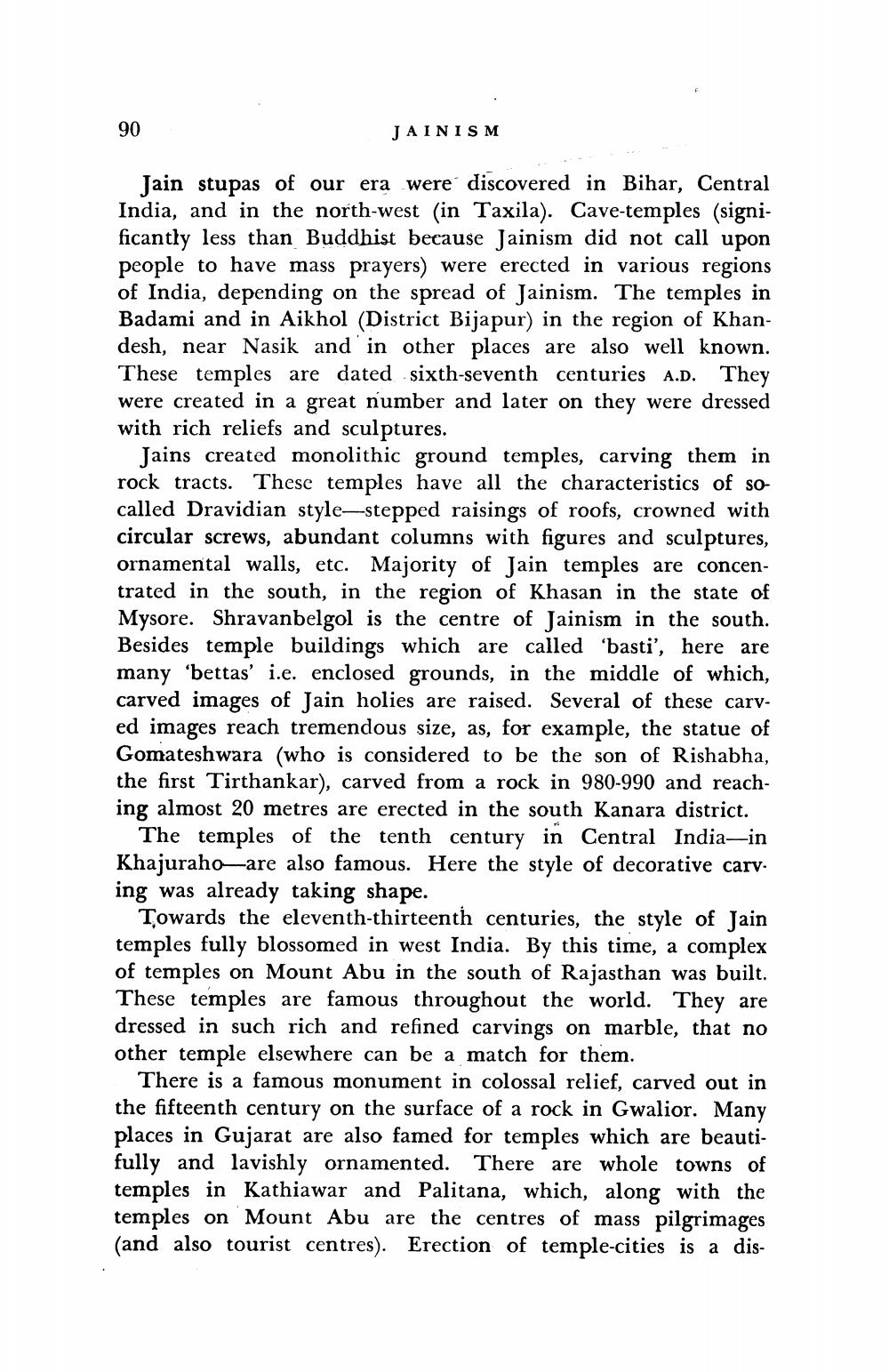________________
90
JAINISM
Jain stupas of our era were discovered in Bihar, Central India, and in the north-west (in Taxila). Cave-temples (significantly less than Buddhist because Jainism did not call upon people to have mass prayers) were erected in various regions of India, depending on the spread of Jainism. The temples in Badami and in Aikhol (District Bijapur) in the region of Khan desh, near Nasik and in other places are also well known These temples are dated sixth-seventh centuries A.D. They were created in a great number and later on they were dressed with rich reliefs and sculptures.
Jains created monolithic ground temples, carving them in rock tracts. These temples have all the characteristics of socalled Dravidian style—stepped raisings of roofs, crowned with circular screws, abundant columns with figures and sculptures, ornamental walls, etc. Majority of Jain temples are concentrated in the south, in the region of Khasan in the state of Mysore. Shravanbelgol is the centre of Jainism in the south. Besides temple buildings which are called 'basti'. here are many 'bettas' i.e. enclosed grounds, in the middle of which, carved images of Jain holies are raised. Several of these carved images reach tremendous size, as, for example, the statue of Gomateshwara (who is considered to be the son of Rishabha, the first Tirthankar), carved from a rock in 980-990 and reaching almost 20 metres are erected in the south Kanara district.
The temples of the tenth century in Central India-in Khajuraho—are also famous. Here the style of decorative carv. ing was already taking shape.
Towards the eleventh-thirteenth centuries, the style of Jain temples fully blossomed in west India. By this time, a complex of temples on Mount Abu in the south of Rajasthan was built. These temples are famous throughout the world. They are dressed in such rich and refined carvings on marble, that no other temple elsewhere can be a match for them.
There is a famous monument in colossal relief, carved out in the fifteenth century on the surface of a rock in Gwalior. Many places in Gujarat are also famed for temples which are beautifully and lavishly ornamented. There are whole towns of temples in Kathiawar and Palitana, which, along with the temples on Mount Abu are the centres of mass pilgrimages (and also tourist centres). Erection of temple-cities is a dis




